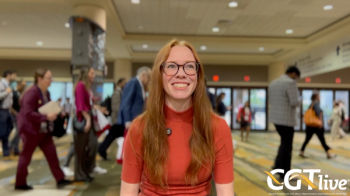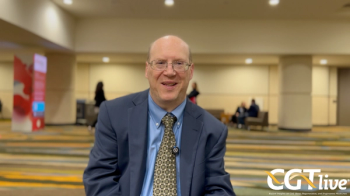
Assessing Gene Therapy in Recessive Dystrophic Epidermolysis Bullosa
Matthew Gantz, president and chief executive officer, Castle Creek Biosciences, discussed the company and its pipeline.
“We have the lentiviral vectors as a backbone that we can leverage both on the ex vivo and in vivo side, so we have broader therapeutic areas that we can access. We're really able to dial in and optimize the right therapy for treating the disease in question. Typically, ex vivo based approaches are for more chronic treatments in nature and are more disease-modifying, whereas the in vivo lentiviral approach allows us to develop curative approaches. So, depending on the disease, we can pick the right approach and we think that gives us a distinct advantage.”
Castle Creek Biosciences is developing cell and gene therapies for rare dermatologic diseases and now, following the acquisition of Novavita Thera, rare metabolic and liver diseases.1 The company is using lentiviral vectors in both the in vivo and ex vivo setting with their dual cell and gene therapy platform.
Castle Creek’s lead program is dabocemagene autoficel (FCX-007, D-Fi), a gene therapy for the potential treatment of recessive dystrophic epidermolysis bullosa (RDEB). D-Fi is currently being assessed in a phase 3 trial (NCT04213261) that plans to recruit up to 24 participants with RDEB.2
GeneTherapyLive spoke with Matthew Gantz, president and chief executive officer, Castle Creek, to learn more about the company, the indications they are targeting, and the dual in vivo and ex vivo platform they leverage. He also discussed D-Fi for RDEB and the phase 3 study currently recruiting as well as how the Novavita Thera acquisition and research collaboration with Mayo Clinic has broadened Castle Creek’s pipeline.
REFERENCES
1. Castle Creek Biosciences acquires Novavita Thera to expand innovative cell and gene therapy platform. News release. Castle Creek Biosciences. January 10, 2022. https://castlecreekbio.com/castle-creek-biosciences-acquires-novavita-thera-to-expand-innovative-cell-and-gene-therapy-platform/
2. Castle Creek Biosciences awarded FDA orphan products development grant to support DeFi-RDEB, a pivotal phase 3 study of FCX-007 investigational gene therapy for recessive dystrophic epidermolysis bullosa. News release. Castle Creek Biosciences. October 21, 2021. https://castlecreekbio.com/castle-creek-biosciences-awarded-fda-orphan-products-development-grant-to-support-defi-rdeb-a-pivotal-phase-3-study-of-fcx-007-investigational-gene-therapy-for-recessive-dystrophic-epidermolysis-bull/
Newsletter
Stay at the forefront of cutting-edge science with CGT—your direct line to expert insights, breakthrough data, and real-time coverage of the latest advancements in cell and gene therapy.

















































